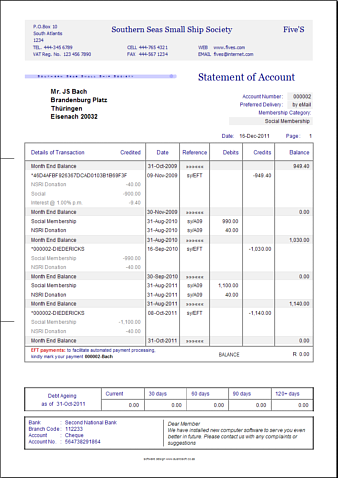
The last step of the accounting cycle is to prepare a post-closing trial balance to test the equality of the debits and credit amounts after the closing entries are made. This trial balance contains real accounts only as the temporary accounts are closed this accounting cycle. To do this, companies make hypothetical scenarios that may involve predicting future financing needs, allocating funds and organizing spending around cash flow, or creating budgets.
Examples of assets include real estate, inventory, cash, and accounts receivable. Balance sheets list assets in order of liquidity — how easily they can be sold, consumed, or turned into cash. Marshall Hargrave is a financial writer with nearly two decades of experience in finance, investing, and tax industries. He’s helped create and edit content for the likes of Investopedia, RobinHood, Fortune, and Yahoo! Finance. Marshall is a former Securities & Exchange Commission-registered investment adviser with a bachelor’s degree in finance from Appalachian State University.
Accountants for Small Businesses
The beginning of the month is a good time to send overdue reminder statements to customers, clients, and anyone else who owes you money. Unless you have a very small volume of transactions, it’s better to organize separate files for assorted receipts weekly or as they come in. Most accounting software lets you scan paper receipts and avoid physical files altogether. While accounting may not be what motivates you to go to work every day, it’s likely something you’ll encounter whether you do it yourself or outsource to an accounting firm. There are weekly, monthly, quarterly, and annual accounting tasks you need to complete to axa insurance dac definition ensure your business’s success. Once the adjusting entries are made, an adjusted trial balance must be prepared.
Basic small business bookkeeping includes tracking your expenses, recording the transactions, and reconciling your business bank statements. It can also include putting together the three key financial statements—the income statement, balance sheet, and cash flow statement. Get your small business on track and move forward toward the goals and financial objectives you have for your company with business accounting principles. The Introduction to Financial Accounting from UPenn will help you learn how to read the three most common financial statements (income statements, balance sheets, cash flow statements). Key accounting best practices for small businesses include keeping businesses’ finances separate from personal finances, maintaining accurate records, and tracking income and expenses.
Choose your accounting method (cash or accrual)
No assurance is given that the information is comprehensive in its coverage or that it is suitable in dealing with a customer’s particular situation. Intuit Inc. does not have any responsibility for updating or revising any information presented herein. Accordingly, the information provided should not be relied upon as a substitute for independent research. Intuit Inc. does not warrant that the material contained herein will continue to be accurate nor that it is completely free how to create a normal job cost sheet for cost accounting of errors when published.
You must use a double-entry accounting system and record two entries for every transaction. Small business accounting requires accurate bookkeeping, which entails maintaining organized records of a business’s financial transactions, including sales, expenses, assets, and liabilities. If this is your first time exploring small business accounting, visit our helpful glossary to become familiar with basic accounting terms. Small business accounting is the process of tracking, recording, and analyzing your company’s financial transactions.

Step 10: Run financial statements
- If you’re using accrual, or double-entry accounting, you will need to understand the accounting equation and debits and credits, which are the backbone of any accounting system.
- The second you decide you’re going to launch your business, you should immediately separate your personal finances from your business finances.
- Financial statements, such as a balance sheet, income statement, and cash flow statement may be necessary.
- Most accounting software lets you scan paper receipts and avoid physical files altogether.
Using a comprehensive bookkeeping software program often becomes easier over time. The best bookkeeping software syncs with your business bank account and payroll systems so that you’re easily able to import and export transaction history. We’ll cover some of the best business bookkeeping software options a little later.
However, for government regulations and tax purposes, it is what does ‘we are going to get one thing on the books’ imply wise to always keep track of everything, including receipts and invoices. Financial advisors can use the financial data gathered by business accounting to help small business owners make important financial decisions about the future and day-to-day operations. However, working with a CPA offers many benefits for LLCs and corporations. CPAs can analyze bookkeeping records, help with payroll and taxes, offer financial consulting, and represent you during IRS audits. Common accounting programs for small businesses include QuickBooks, Xero, and FreshBooks. Each platform offers powerful features for small business owners, including bookkeeping tools, point-of-sale functions, and mobile apps.
